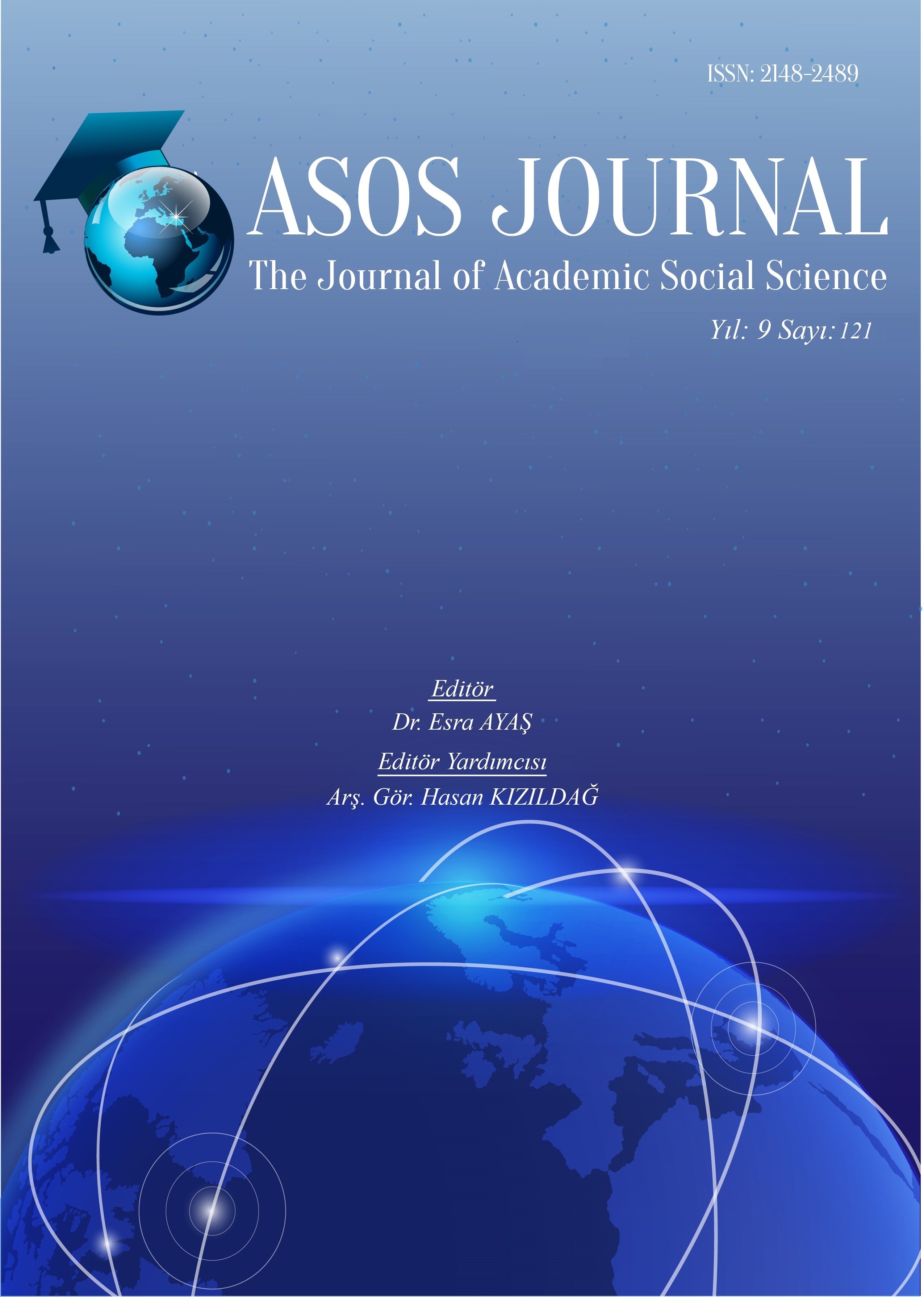Author :
Abstract
Bu çalışma Viktorya dönemi yazar ve şairi Thomas Hardy’nin şiir anlayışını, romancı kişiliğinden ziyade şair kimliğini ve şiirlerinde kendine has tarzını nasıl yarattığını incelemeyi amaçlamıştır. Çoğu eleştirmen tarafında modern bir şair olarak kabul edilen Hardy kendi dönemindeki yazar ve şairlerden kullandığı modern üslup ve tarz ile farklılaşmaktadır. Hardy her ne kadar düz yazı ve roman türünde büyük ses getiren bir şair olsa da onun en büyük tutkusu kendini çok daha rahat ifade edebildiği şiir türüdür. Şiirlerinde döneminin karakteristik özelliklerinden çok modern öğeler ve üslup kullandığı için de modern şiirin öncülerinden biri olarak kabul edilir. Hardy’nin şiirlerine baktığımızda lirikalitenin ön planda olduğu karamsar ve kasvetli bir tonda oluşturulmuş şiirler görürüz. Ele aldığı konuları ise fragmentasyon yöntemiyle aktaran Hardy şiirlerinde yaratmış olduğu belirsizlik ile okuyucunun zihninde farklı manalar yaratmayı başarabilmiştir. Bu çalışma Hardy’nin romancı kimliğinin dışında şiir alanında neler yaptığını ve kendi özgün tarzıyla nasıl modern şiirler oluşturduğunu incelemeyi amaçlamaktadır.
Keywords
Abstract
This study aims to examine Victorian writer and poet Thomas Hardy's understanding of poetry and how he creates his poetic identity through his unique style in his poems. Considered as a modern poet by most critics, Hardy diverges from the writers and poets of his time with the modern style and form he used. Although Hardy is a poet who made a great impression in the genre of prose and novel, his greatest passion is the poetry through which he can express himself in a more unconventional way. He is considered as one of the pioneers of modern poetry because he uses modern elements and style rather than the characteristic features of Victorian period. When we analyze Hardy's poems, we see poems composed in a pessimistic and gloomy tone where lyricism is at the forefront. Employing the subjects with fragmentation method, Hardy is able to create confusion in the mind of the reader with the ambiguity in his poems. This study aims to examine what Hardy has done in the field of poetry apart from his novelist identity and how he has created modern poems with his own unique style.
Keywords
- Banerjee, A. (2000). An Historical Evaluation of Thomas Hardy's Poetry. Lewiston, N.Y: Edwin Mellen.
- Bradbury, M. & McFarlane, J. W. (1991). Modernism: A Guide to European Literature 1890- 1930. London: Penguin.
- Butler, L. S. J. (1986). Studying Thomas Hardy. Harlow: Longman.
- Cobb, D. (2013, December 5). Thomas Hardy. The Modernist Experiment. https://themodernistexperiment.wordpress.com/extended-analyses/thomas-hardy/.
- Dolin, T. & Widdowson, P. (2004). Thomas Hardy and Contemporary Literary Studies. New York: Palgrave Macmillan.
- Ekler, Onur. "Pre-Oedipal Lucy Snowe: Isis Unbound Over Castrated Male Body." Electronic International Journal of Education, Arts, and Science (EIJEAS) 1.1 (2015). p.77-84
- Gibson, J. (1996). Thomas Hardy: A literary life. New York: St. Martin's Press.
- Hardy, B. N. (2000). Thomas Hardy: Imagining imagination: Hardy’s poetry and fiction. London: Athlone Press.
- Harvey, G. (2003). The Complete Critical Guide To Thomas Hardy. New York, N.Y: Routledge.
- Hynes, S. L. (1961). The pattern of Hardy's poetry. Chapel Hill: University of North Carolina press.
- ----- (1980). The Hardy Tradition in Modern English Poetry. The Sewanee Review, 88(1), 33-51.
- Karaca Küçük, Ş. (2020). Katherine Mansfıeld’in Çocuksu Ama Çok Doğal Bir Şey ve Mustafa Kutlu’nun 5402 Adlı Hikâyalerinde Pastoral Kaçışın İmkânsızlığı. Yeni Türk Edebiyatı Araştırmaları, 12 (23), 153-170.
- Miller, J. H. (1970). Thomas Hardy, Distance and Desire. Cambridge, Mass: Belknap Press of Harvard University Press.
- Morgan, W. (1974). Form, Tradition, and Consolation in Hardy's "Poems of 1912-13". PMLA, 89(3), 496-505. doi:10.2307/461585
- Ousby, I. (1979). Past and Present in Hardy's "Poems of Pilgrimage". Victorian Poetry, 17(1/2), 51-64.
- Riquelme, J. (1999). The modernity of Thomas Hardy's poetry: Hardy among the Modernists. In D. Kramer (Ed.), The Cambridge Companion to Thomas Hardy (Cambridge Companions to Literature, pp. 204-223). Cambridge: Cambridge University Press. doi:10.1017/CCOL0521562023.012
- Shires, L. (1999). The Radical Aesthetic of Tess of the d'Urbervilles. In D. Kramer (Ed.), The Cambridge Companion to Thomas Hardy (Cambridge Companions to Literature, pp. 145-163). Cambridge: Cambridge University Press. doi:10.1017/CCOL0521562023.009.
- ----- (2004). Hardy and nineteenth-century poetry and poetics. 255-278.
- Simpson, P. (1979). Hardy's "The Self-Unseeing" and the Romantic Problem of Consciousness. Victorian Poetry, 17(1/2), 45-50.
- Southworth, J. G. (1947). The poetry of Thomas Hardy. New York: Columbia University Press.
- Strachey, L. (2016). Delphi Complete Works of Lytton Strachey (Illustrated). Place of publication not identified: Delphi Classics.
- Thorpe, M. (1993). The Thomas Hardy Journal, 9(2), 72-73.
- Wells, D. (2014). Thomas Hardy’s poetry and international modernism. The Thomas Hardy journal, 30, 185-199.
- Williamson, E. (1985). Thomas Hardy's Criticism of the Critics. The Journal of English and Germanic Philology, 84(3), 348-363.
- Witek, T. (1990). Repetition in a Land of Unlikeness: What "Life Will Not Be Balked Of" in Thomas Hardy's Poetry. Victorian Poetry, 28(2), 119-128.
